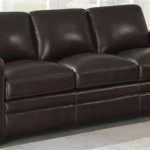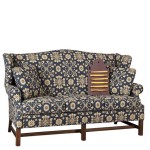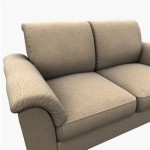What Is The Best Material For Sofa Cushions?
Sofa cushions are crucial for comfort and aesthetics, significantly impacting a sofa's overall feel and longevity. Choosing the right cushion material depends on individual preferences, budget, and desired level of support. This article explores various cushion materials, outlining their characteristics to aid in informed decision-making.
High-Resiliency Foam (HR Foam)
HR foam is a popular choice known for its durability and support. It offers a firmer feel than standard polyurethane foam and recovers its shape quickly after compression. This makes it a good option for individuals seeking long-lasting cushions that maintain their structure over time. HR foam is also resistant to sagging and indentation, contributing to the sofa's overall lifespan.
Memory Foam
Memory foam conforms to the body's contours, providing personalized support and pressure relief. This material is known for its ability to distribute weight evenly, which can be beneficial for individuals with back pain or other joint issues. Memory foam cushions generally offer a softer feel than HR foam and retain heat, which can be a consideration in warmer climates.
Polyurethane Foam
Polyurethane foam is a widely used, cost-effective cushion filling. It comes in various densities, offering a range of firmness options. While generally less durable than HR foam or memory foam, polyurethane foam provides adequate comfort and support for everyday use. Its affordability makes it a popular choice for budget-conscious consumers.
Down and Feather Blend
Down and feather blend cushions offer a luxurious, plush feel. Down provides exceptional softness, while feathers add support and structure. These cushions offer a classic, comfortable seating experience, conforming to the body and offering a high degree of sink-in comfort. However, they require regular fluffing to maintain their shape and can be more expensive than foam options.
Polyester Fiberfill
Polyester fiberfill is a synthetic alternative to down and feathers. It offers a softer feel than foam and is often used in combination with other materials, such as foam cores, to provide enhanced comfort and support. Polyester fiberfill is hypoallergenic and relatively inexpensive, making it a suitable option for individuals with allergies or budget constraints.
Cotton Filling
Cotton filling provides a firm, supportive feel. It's a natural, breathable material that is hypoallergenic and resistant to dust mites. Cotton cushions offer a more structured seating experience compared to down or polyester fiberfill, making them a suitable choice for individuals who prefer a firmer seat. They are also environmentally friendly due to cotton's biodegradable nature.
Latex Foam
Latex foam is a natural material derived from rubber trees. It offers excellent support, durability, and breathability. Latex foam is known for its resilience and ability to quickly recover its shape. It also resists dust mites and mold, making it a hypoallergenic option. While generally more expensive than other foam types, latex offers a long-lasting, eco-friendly cushion solution.
Factors to Consider When Choosing Cushion Materials
Several factors should influence cushion material selection. Budget plays a significant role, as material costs vary widely. Desired comfort level, whether firm or plush, should also be considered. Durability and maintenance requirements are essential, especially in high-traffic areas. Finally, individual needs, such as allergies or specific support requirements, should be taken into account.
Understanding Cushion Density
Cushion density significantly impacts comfort and durability. Higher density foam indicates greater durability and support, while lower density foam offers a softer feel. Understanding density ratings can help consumers choose cushions that meet their specific comfort and support needs. It's often recommended to test cushions in person to experience the difference in density and firmness.
Caring for Your Sofa Cushions
Proper care can extend the lifespan of sofa cushions. Regular fluffing and rotation can help maintain their shape and prevent uneven wear. Cleaning methods vary depending on the cushion material; following manufacturer instructions ensures proper care and avoids damage. Protective covers can help prevent stains and extend the life of the cushions, especially in households with children or pets.

Best Fabrics For Sofas The Inside

How To Choose The Right Sofa Cushion

The Best Foam To Use For Sofa Cushions Good Better

Best Fabric For Sofa How To Pick A That Lasts

10 Best Sofa Material Types That Are Perfect For Every N Home

The Best Foam To Use For Sofa Cushions Good Better

Types Of Pillow Stuffing What S The Best Stated Home Blog

Down Vs Foam Sofa Cushions Circle Furniture
Your Guide To Choosing The Right Cushion Filling Dfs

Best Fabrics For Sofas The Inside








